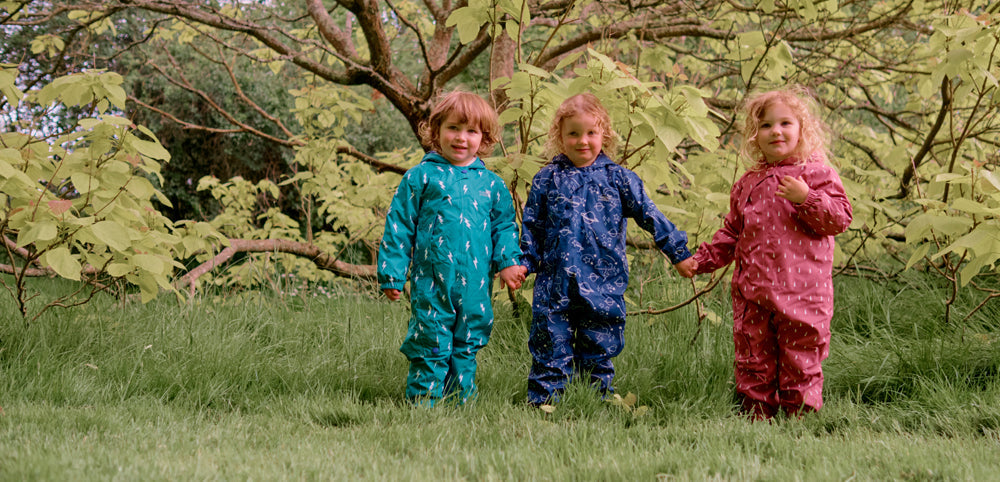
5 Low-Waste Outdoor Activities
Looking for a way to entertain the family this Winter?
Here, Scott Hawthorne from skipsandbins.com shares some low-waste outdoor activities you can have a go at.
As we reach the time of year when the cold weather and dark evenings seem never-ending, you might be wondering how you can spend time outdoors with your children. Why not use this time to introduce them to the importance of the environment and how we can protect it? With a few low-waste outdoor activities, you can get your family out of the house, all while helping out the environment. Below, we'll go through some eco-friendly activities everyone will enjoy this winter.

Explore new walking routes
Now is a great time to explore places within your local area that you might never have been before. Wrap the kids up warm and go for a walk around your neighbourhood. You might discover a few new routes you'd like to try out. Remember to keep an eye out for any wildlife. You may spot a few local birds or squirrels on your travels. Then, once you get home, you can research how you can help protect them.
Plan a scavenger hunt
One of the best ways to keep children engaged with the outdoors is by planning a scavenger hunt around your neighbourhood or garden. Create a list of things you'll be able to find in your local area — such as certain animals, birds, and trees, or particular colours and textures — and encourage your little adventurers to keep an eye out for each item. Then, they can tick them off the list as soon as they've found them.

Get crafting
Instead of throwing away old objects from your home, you can easily recycle them into fun toys and games for the whole family to enjoy. For example, you could hang an old piece of rope from a tree branch to create an exciting swing, using a small log or piece of wood as a seat. Or, you could craft kites from twigs, string, and tissue paper. You can make your own bird feeders from a range of objects you have in your house that would otherwise be thrown away.
Empty toilet rolls and plastic bottles can be transformed into DIY bird feeders. Simply roll your cardboard tubes in some suet or vegetable shortening and then dip them again in some bird seed. Add a couple of small holes at the top of the roll and feed some string through them. Then, just hang them outside and wait for your bird friends to come and feast. To recycle plastic bottles into bird feeders, cut a hole in the side of the bottle and add a couple of small drainage holes at the base using a pin. You'll also need to add a couple of small holes at the top of the bottle to feed some string through. Then, simply fill it with bird seed and hang it outside.
If you're looking for a bigger project, you can recycle some old wooden palettes to create a beautiful treehouse or playhouse that your family can enjoy all year round! You can enlist some little helpers to paint and decorate it. Why not try finger painting some flowers on the walls? Before building a treehouse, you may need to seek planning permission, so it's worth checking with your local authority before you start any work.

Start a vegetable patch
Growing your own fruits and vegetables can be great for the environment. Not only will it reduce your plastic waste as it removes the need for packaging, but it can also lower your carbon footprint as your food doesn’t have to travel very far to reach your table. Plus, what child doesn't like spending some time in the mud? You can recycle your leftover food by removing the seeds and roots from your vegetables and planting them in the ground to grow. Hardy crops like broccoli, Brussels sprouts, parsnips, cabbage, and kale can all fare particularly well in the colder months. To help your plants grow a little better, it might be worth planting them indoors in small pots before transferring them to your garden. Just make sure you find a bright windowsill for them to sit on. Your little ones will love tracking the progress of their plants each day.
Do some composting
As you spend more time outdoors creating new experiences, you might find that you're left with a small amount of garden waste, such as grass and leaves, and you're wondering how to get rid of it. Instead of simply throwing it away, why not start a compost heap to recycle your waste? You can even add your leftover vegetable peelings, fruit waste, tea leaves, and coffee grounds! Compost bins are great for the environment, as you'll be recycling your waste and turning it into food for insects. Then, once your compost mixture looks dark brown and soil-like, it makes a great organic fertiliser for your garden. Why not add it to your new vegetable patch? Alternatively, you could hire a green waste bin to recycle your waste. Once it's been collected, your waste will be taken to a special composting site and used for farming and gardening.
Keeping the kids occupied can be a difficult feat. But, by following the tips in this guide, you can organise some fun, planet-friendly activities the whole family can enjoy!




















